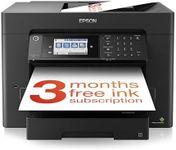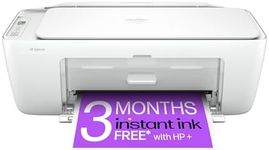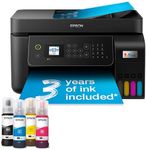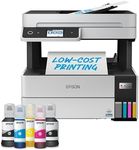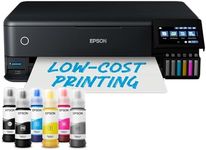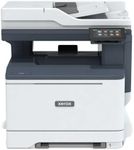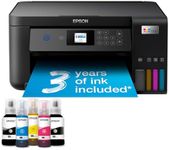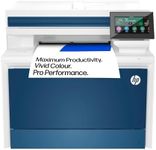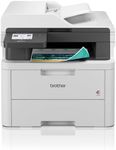Buying Guide for the Best Office Printers
Choosing the right office printer can significantly impact your productivity and efficiency. When selecting a printer, consider the specific needs of your office, such as the volume of printing, types of documents, and any special features that might be required. Understanding the key specifications will help you make an informed decision that aligns with your office's requirements.Print SpeedPrint speed refers to how quickly a printer can produce pages, usually measured in pages per minute (PPM). This is important for offices with high printing demands, as faster printers can save time and increase productivity. Print speeds can vary widely; lower speeds (around 20 PPM) are suitable for small offices with moderate printing needs, while higher speeds (50 PPM or more) are ideal for large offices with heavy printing requirements. Consider your office's average print volume to determine the appropriate speed.
Print QualityPrint quality is determined by the printer's resolution, measured in dots per inch (DPI). Higher DPI values result in sharper and more detailed prints, which is crucial for offices that need to produce professional documents or high-quality images. For general office use, a resolution of 600 DPI is often sufficient, but for graphic design or marketing materials, you might need a printer with 1200 DPI or higher. Assess the type of documents your office typically prints to choose the right print quality.
Connectivity OptionsConnectivity options refer to how a printer can connect to your office network and devices. Common options include USB, Ethernet, Wi-Fi, and Bluetooth. Ethernet and Wi-Fi are essential for offices that need multiple users to access the printer, while USB is suitable for direct connections to a single computer. Bluetooth can be useful for printing from mobile devices. Consider the number of users and devices in your office to determine the best connectivity options.
Paper HandlingPaper handling capabilities include the types and sizes of paper a printer can accommodate, as well as its input and output capacity. This is important for offices that print on various media or require large print jobs. Printers with multiple trays can handle different paper sizes and types, while higher input and output capacities reduce the need for frequent paper refills. Evaluate your office's paper usage and document types to select a printer with suitable paper handling features.
Duplex PrintingDuplex printing allows a printer to automatically print on both sides of a page, which can save paper and reduce costs. This feature is particularly useful for offices that produce large volumes of documents and want to be environmentally friendly. Some printers offer manual duplexing, which requires user intervention, while others provide automatic duplexing for convenience. Consider how often your office prints double-sided documents to decide if this feature is necessary.
Monthly Duty CycleThe monthly duty cycle indicates the maximum number of pages a printer can handle per month without experiencing issues. This is crucial for ensuring the printer can meet your office's printing demands. Duty cycles can range from a few thousand pages to over 100,000 pages per month. For small offices, a lower duty cycle may suffice, but larger offices with heavy printing needs should opt for a printer with a higher duty cycle. Assess your office's average monthly print volume to choose the right duty cycle.
